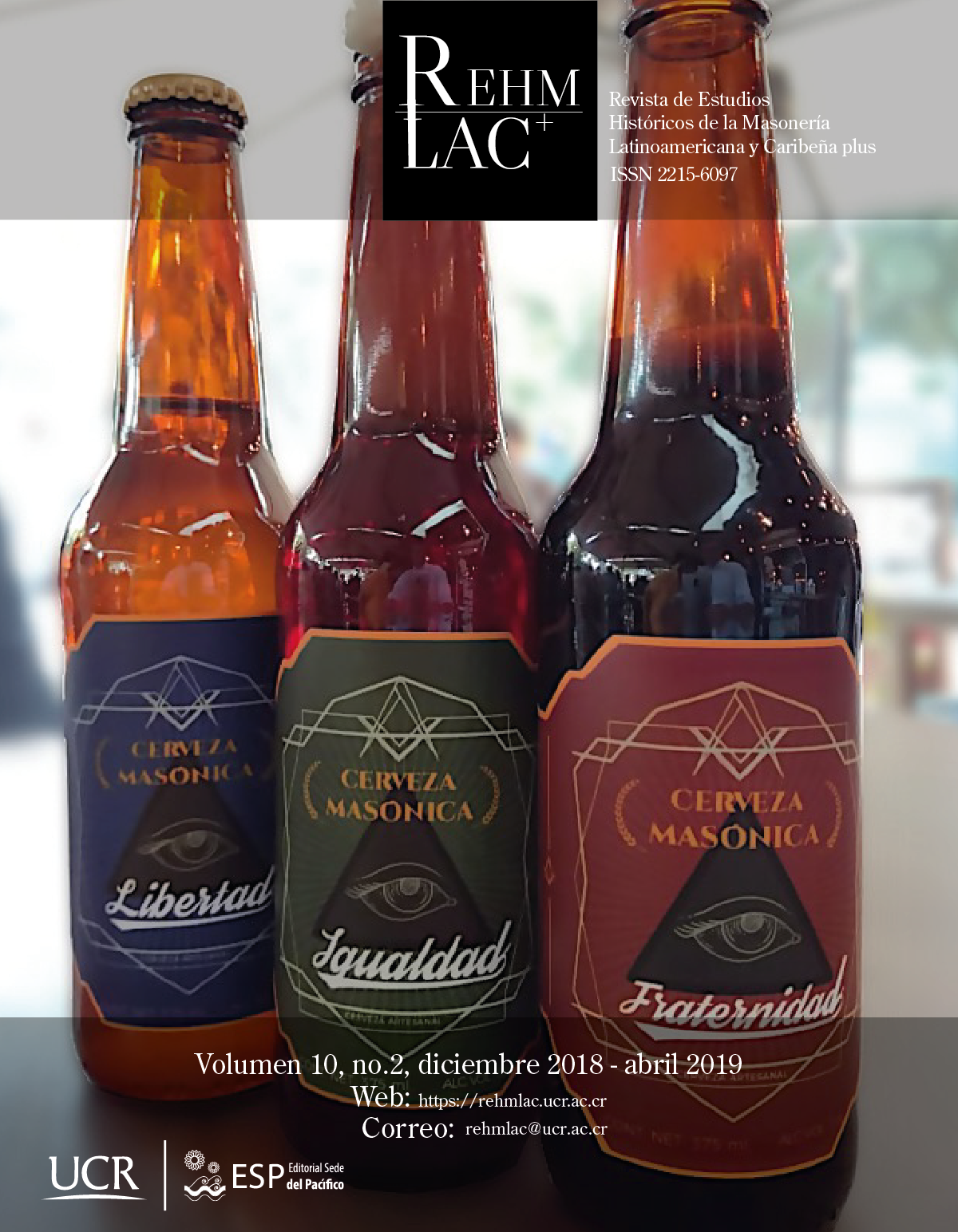Abstract
This article gives an account of the presence of the Masonic theme, particularly its initiation rituals, in cartoons. The text deals with the popular imaginary regarding lodges and the people belonging to them. Also, it describes the way in which it is shown in American audiovisual productions as well as how it deals with some topics related to Masonic practices, such as tests designed for the profane, the exclusion of women, the consumption of alcohol and the perks that survive in Freemasonry according to society’s perception.
References
Anderson, James y Jean Théophile Désaguliers. The Constitutions of the Free-masons. Containing the History, Charges, Regulations, &c. of that most Ancient and Right Worshipful Fraternity. Londres: William Hunter for John Senex at the Globe, 1723.
Arellano, Jorge Eduardo. “Rubén Darío y su iniciación masónica en Managua”. Magazine Modernista. 12 de noviembre de 2010.
Barruel, Agustín. Memorias para servir a la historia del jacobinismo. Perpiñán: imprenta de J. Alzine, 1827.
Connell, R. W. Masculinidades. Ciudad de México: Universidad Nacional Autónoma de México, 2003.
Duncan, Malcolm C. Duncan´s Masonic Ritual and Monitor or Guide to the three symbolic degrees of the ancient York Rite. Nueva York: David McKay Company: 1866.
Gray, Jonathan. Watching with The Simpsons: Television, parody, and intertextuality. Londres: Routledge, 2012.
Liturgia del Primer Grado. Rito Escocés Antiguo y Aceptado, mandada observar por la Gran Logia del Distrito Federal a todas las logias de su jurisdicción. México: Tipografía de Eusebio Sánchez, 1899.
Lozano, José. “Consumo y apropiación de cine y TV extranjeros por audiencias en América Latina”. Comunicar 15, no. 30 (2008): 62-72.
Martel, Frederic. Cultura Mainstream: cómo nacen los fenómenos de masas. Madrid: Taurus, 2011.
Martínez Esquivel, Ricardo, Yván Pozuelo Andrés y Rogelio Aragón (editores). 300 años: Masonerías y Masones. 1717-2017. Ciudad de México: Palabra de Clío, 2017-2018.
Mollès, Dévrig. La invención de la masonería. Revolución cultural: religión, ciencia y exilios. Buenos Aires: Edulp, 2015.
Moraes, Diego. Antimasonería. 1717-2017. Montevideo: Penguin Random House, 2017.
Napier, Susan. ANIME: from Akira to Princess Mononoke Experiencing Contemporary Japanese Animation. Nueva York: St. Martin’s Griffin, 2005.
Orozco, Guillermo. Televisión y producción de significados. Guadalajara: Universidad de Guadalajara, 1994.
Pinsky, M. The Gospel according to the Simpsons: The spiritual life of the world’s most animated family. Kentucky: Westminster John Knox Press, 2001.
Primer Grado. Aprendiz del Rito Nacional Mexicano. Mazatlán: Tipografía de P. Retes, 1869.
Rice, Lee. 2009. “Sponge Bob Square Pants: Pop Culture Tsunami or More?”. The Journal of Popular Culture 42, no. 6 (2009): 1092-1114.
Serna Galindo, Ricardo. “La masonería en el séptimo arte. Una aproximación al caso español”. REHMLAC+ 8, no. 1 (mayo-noviembre 2016): 71-86, https://revistas.ucr.ac.cr/index.php/rehmlac/article/view/24287
Vargas Márquez, Wenceslao. La Masonería en la Presidencia de México. Ciudad de México: Ediciones Surco de Letras, 2010.
Wells, Paul. “Smarter that the average art form. Animation in the televison era”. En Prime Time Animation: Television Animation and American Culture. Editado por Carol Stabile y Mark Harrison. Nueva York: Routledge, 2003.
Zavala, Lauro. “La traducción intersemiótica en el cine de ficción”. Ciencia Ergo Sum 16, no. 1 (marzo-junio 2009): 47-54.


